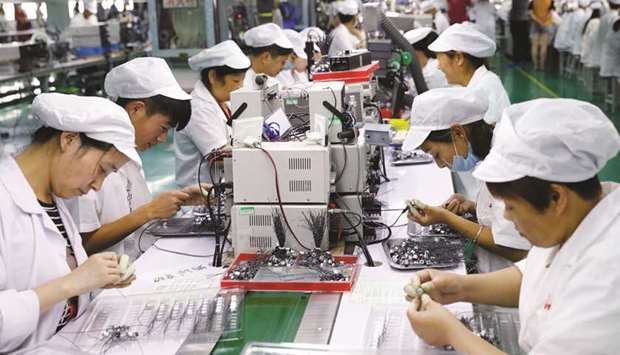The world’s second-largest economy grew 6.7% in the last quarter year-on-year – matching expectations – and looks set to meet the official 2018 growth target of around 6.5%, though the trade row with Washington, a slowing property market and lower shipments have sharply increased the risks to the outlook.
“We expect growth in H2 to be challenged by the slow credit growth and softer real estate activity. Also, the intensifying trade conflict with the US will start to weigh on growth,” Louis Kuijs, head of Asia Economics for Oxford Economics in Hong Kong, wrote in a note.
The second quarter GDP figure was slightly below the first quarter’s 6.8%, the National Bureau of Statistics said yesterday, with net exports a drag on overall first half economic growth.
As the trade tussle with Washington shows no signs of ebbing and the external sector continues to weigh on China’s economy, more timely monthly activity data indicated growth was slowing at a faster pace going into the second half of the year. First-half growth in fixed asset investment – which includes spending on new homes, factories, roads and ports – was a record low, while industrial output for June matched the slowest growth rate in over two years at 6% and missed forecasts of 6.5% expansion.
The data weighed on Asian markets, adding to concerns about the impact from the Sino-US trade war on the global economy and China. The Shanghai Composite index and the blue-chip CSI300, the world’s worst-performing major indexes this year, each fell over 0.6%. MSCI’s broadest index of Asia-Pacific shares outside Japan fell 0.4%.
On a quarterly basis, growth picked up 1.8% from 1.4% in the first quarter, beating expectations of 1.6% growth, mainly supported by domestic consumption. Despite slower factory output growth overall, China’s steel mills churned out record amounts of the construction material in June as producers rushed to cash in on hefty margins. China’s economy has already felt the pinch from a multi-year crackdown on riskier lending that has driven up corporate borrowing costs, prompting the central bank to pump out more cash by cutting reserve requirements for lenders. Data on Friday showed China’s exports grew solidly in June, though analysts suggest front-loading of shipments ahead of tariffs taking effect may have boosted the figures.
The administration of US President Donald Trump has raised the stakes in its trade row with China, saying it would slap 10% tariffs on an extra $200bn worth of Chinese imports.
That threat came only days after both countries slapped tit-for-tat tariffs on $34bn worth of each other’s goods.
The property market, a key economic driver, also slowed, as property investment posted its weakest growth in six months in June, with sales also cooling.
Faced with slowing domestic demand and the trade war risks, Chinese policymakers have started to step up support for the economy and have softened their stance on deleveraging. Some analysts are calling for even stronger measures.
“If the situation gets worse a lot faster than what we expect I do think Chinese authorities need to beef up supportive measures, both fiscal and monetary,” said Iris Pang, Greater China Economist at ING in Hong Kong.



